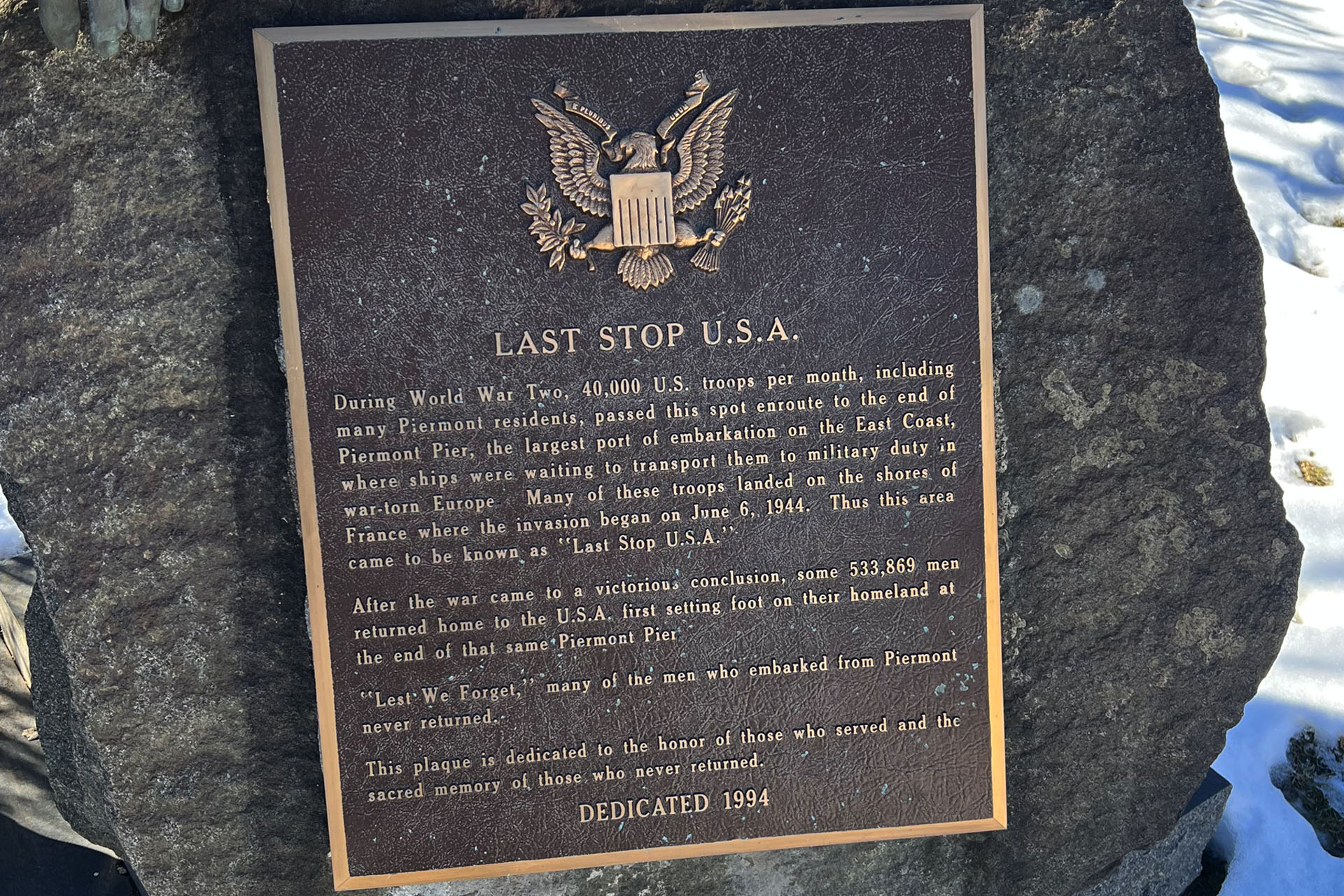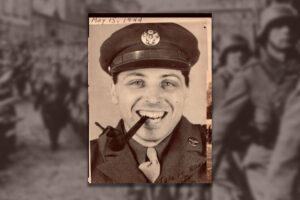In February, I entered the Dennis P. McHugh Piermont Public Library. It was named in honor of the FDNY Firefighter from Ladder 13 who lost his life on 9/11. Inside, I saw two librarians sitting at the information desk like they were about to deliver the nightly news.
I had previously contacted one about my article. The other one was unaware of who I was or why I came to the library, especially one in a county I did not live in. Still, that second librarian tried his best to assist me whilst my contact, Rob, was busy with a customer.
After a bit of confusion and then a quick clarification from Rob, the second librarian brought over the copies of the Rockland County Times that were earmarked for me.
“Where’s your article?” the second librarian enquired.
I turned the pages.
The paper was peppered with all sorts of headlines pertaining to the Hudson Valley as well as some concerning The City.
The second librarian watched as I scrutinized each page. Passing these stories, I started to feel as if I had been misled. Four pages in and I had yet to see my article. Luckily, I found it on page 5, under the section called “Reader’s Submission.”
“What’s it about?” the second librarian asked.
“It’s about the Six Triple Eight. An all-female ‘colored’ battalion in World War Two who dealt with racism, prejudices, and biases. I tied it to the Mount Moor Cemetery, the one that’s between the two parking lots near the Palisades Mall.”
The librarian nodded, “There’s a lot of history in Rockland. A lot of black history that’s overlooked. There’s a mine nearby that was part of the Underground Railroad. We used to hang out there as kids. You know being bad teenagers.” He said this last part while using air quotes.
Rob joined the conversation then. “Did you know there’s also a pier nearby where 70 % of the soldiers who went over to Europe for D-Day sailed from. And you know what, 70% of those that left that pier never came back.”
I was not sure if the stat was correct, but the token knowledge piqued my interest.
***
I was unfamiliar with the pier Rob talked about. Honestly, I hadn’t even known about the Village of Piermont until that very day.
I must admit that I had overlooked the town many times. From Route 9W, you could only see the tops of trees growing up from the village. From the Tappan Zee, you’d only see reeds growing out from the marsh, other tiny man-made structures that gave no sign of life, and a peninsula that looked as though high tide could swallow it up.
On the day I drove to the library, I had to twist down winding hills and make hair pin turns. I stopped at certain intersections to allow traffic through and be allowed through the narrow streets. And when I made it to the bottom, I found out that below that tree line and beyond that marsh there was a village called Piermont.
In that library, I was not only given a trophy piece of my latest work, but also a history lesson on what had been for me, up until then, a place shrouded in arboreal cover like a hidden tribal village in some distant land.
But this community was, is, every bit as vibrant as any I have seen. In fact, it epitomizes Americana. The village was like a time capsule that housed an old railroad station, a 19th century organized firehouse, and an avenue that could rival Disney’s Main Street U.S.A.
***
While in the library, the librarians at times would split off from our discussion and make small talk with what seemed to be the “regulars.” At one point, they changed the conversation from our main topic of local history to one of nostalgia.
The second librarian began the new topic by reminiscing about his childhood in Westchester County. This was after I had revealed that I had driven from there.
“We were going to move there, mom, dad and I, but the taxes were too high. $3,000 dollars or more. So, we settled in Rockland.”
Rob chimed in, “You think taxes are that much more expensive there? It’s just as expensive here.”
They continued their act of arguing playfully like they were trying to impersonate Abbott and Costello.
“Well, I should check out that pier,” I said as I started to back up while the librarians continued their spiel about this and that and everything in between.
I headed to my car. In my hand were copies of the Rockland County Newspaper with my article inside. In my car I thought about heading straight home, but then an idea struck me. I decided to change course, drive through the village of Piermont and see what that pier was all about.
***
As I left the parking lot, I stopped at the intersection in front of the firehouse. The firehouse was called Engine Hose Company Number 1. Above the bays was the organization date of 1851. The old timey styled writing made the brick station look as historical as the date related.
After reading the sign, I made a quick left onto Piermont Ave and kept straight -through the intersection at Ash Street. That was where Piermont’s “Main Street U.S.A.” began.
To the right were these brick tenement-styled buildings. Glass windowed storefronts showcased their merchandise or seating for their restaurants. Apartments sat above these businesses. To the left was a gas station that had been converted into a BBQ joint. Between the brick tenements were wooden mixed occupancy row houses and federalist style structures. London Plane trees lined the sidewalks. Cars lined the road. An air of admiration lined the faces of every building.
After the main drag, I made a left onto Paradise Avenue at the white-wooden Macedonia Baptist Church. I followed that road to a place that was both primitive and refined. On that avenue, there were two wooden frontier-looking homes and another house with a gambrel roof. They all had groomed lawns; some were bordered by white picket fences that wrestled with wild vegetation. Beyond that, there was the Sparkill Creek, overgrowth, and then the Piermont Marsh.
The Piermont Marsh conjured up a bayou like image. The reeds enhanced the wild appeal. The widow walks atop some of the homes foreshadowed Rob’s description of that last march many soldiers made on American soil.
At some point, Palisades Avenue became Ferry Road. As the structures thinned out, the wooden homes established a last point of contact with civilization. Nature crept ever closer until it finally engulfed the last of the man-made structures.
I turned right and headed down a long path flanked on either side by tall brown reeds. Driving that stretch was a cautious venture.
***
Even in the cold, people were out walking. The snow did little to detract those who came from near and far.
The great marsh at the mouth of the Sparkill was distinct on the right side -like it was showing off for all to see. To the left, a memorial stood with a flag at the top of its pole. The memorial was for another FDNY member- Battalion Chief Fred C. Sheffold.
According to the National Fallen Firefighters Foundation, Chief Sheffold was a 32-year career veteran who was just finishing a tour on 9/11. He answered the call that day and made the supreme sacrifice.
After the memorial, I was on the Piermont Pier in the middle of the Hudson. The pier was once part of the Erie Railroad. I would learn this fact later. But while driving, the pier was just a paved path.
Trees were spaced at intervals and stood like headstones. They had no leaves in that winter land. The remnants of snow and ice sat like frosting on the barren rocks. Benches welcomed those in need of rest. Most people huddled past me as the wind bit their faces and stung their backs. I felt none of this as I drove down in my heated car. I played no music as I felt a sense of foreboding. As if I was driving through a cemetery or other such hallowed ground. Still, the handmade bird houses that hung from the naked tree branches jostled in the wind and sent a bit of humor from the landscape.
Black rock jutted from the gravel beaches. It was a bit like an Icelandic terrain. I saw wooden artifacts of long-ago. They were leftovers from demolished piers that poked from the dark Hudson water. A few seagulls pecked at scraps in the river and its shore. North was the long Bridge of the Tappan Zee. To the South was Tallman Mountain. I passed the Piermont Fire Department’s boat storage. It looked like a mechanic’s garage. At the end, sitting idle was one of Columbia University’s field stations.
Near the field station, a traffic circle went round another flagpole. This time, instead of memorializing a single person, it represented the 1,000s upon 1,000s who fought and died. A poem spoke for the voices of Camp Shanks, a place where many of our grandfathers and great grandfathers had stepped off from to march their final paces before leaving the American soil.
A sign posted near the flagpole stated, ‘During World War II, nearly 1.3 million soldiers passed through Camp Shanks, nicknamed “Last Stop U.S.A.,” on their way to Europe, including 75% of the Americas who fought on D-Day. An estimated 500,000 of those 1.3 million soldiers departed from Piermont Pier.”’
As I read the sign, the wind blew, and I felt the cold. The sound of metal pinging off metal chimed in the air. It sounded like a death knell. I felt an eerie sensation that I was not alone. Instead, I was surrounded by a thousand boots that were all marching to the beat of a forgotten drum. I imagined seeing the ships docked with their gangways attached. The vessels creaked as the soldiers and sailors mixed into one body aboard. The American war machine was on its way to Europe in 1944.
***
As I drove home, I wondered if the librarians ever came to a consensus about the tax rate being higher in Rockland or in Westchester County. I also wondered if the soldiers who returned from the War ever marched along that paved path again. Or perhaps many opted instead to leave the memory of that last march behind. Regardless of the answers, I made sure to look out over the right side of the Tappan Zee Bridge as I crossed the Hudson River.
This time, I did not have to wonder about that land that jutted out from the marsh or what that tree line hid beneath its canopy. This time, I knew exactly what it was I was looking at. This time, I knew that that pier and that village existed. This time, I said to myself, “That’s Piermont. And there’s a lot of history down there.”





